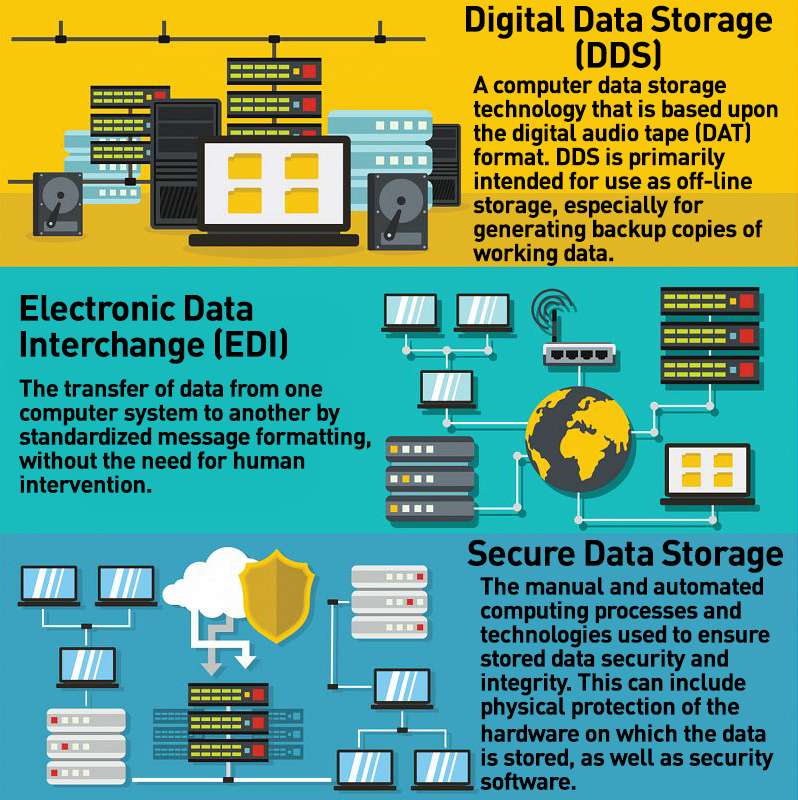Data Destruction Solutions: A Key Element in Your Cyber Security Method
Data Destruction Solutions: A Key Element in Your Cyber Security Method
Blog Article
Exploring the Significance of Data Devastation in the Context of Computer System Protection Providers and Protecting Confidential Information
In an age where information breaches are progressively usual, the value of efficient information damage can not be overemphasized. When no much longer needed, Organizations must take on strict actions to guarantee that delicate info is not only safeguarded during its lifecycle yet also decisively gotten rid of. The methods used for data obliteration, combined with conformity to lawful standards, play a critical function in preserving discretion and depend on. The ramifications of these practices prolong past mere compliance, affecting a firm's track record and operational integrity in the electronic marketplace. What methods can organizations apply to enhance their data devastation protocols?
Recognizing Information Destruction
Data destruction is an essential component of computer system protection that involves the permanent elimination of information from storage devices to stop unapproved accessibility and potential data violations. In a progressively digital landscape, organizations deal with increased threats related to sensitive details being improperly accessed or exploited. Efficient data damage safeguards against these hazards, making sure that confidential dataâEUR" such as customer details, copyright, and economic recordsâEUR" can not be recuperated after disposal.
Understanding the significance of data devastation prolongs beyond plain compliance with legal and governing structures; it is necessary for keeping organizational integrity and trust fund. When information is improperly handled or inadequately damaged, the repercussions can be severe, consisting of monetary loss, reputational damage, and lawful responsibilities.

Techniques of Data Eradication

One widespread approach is information wiping, which includes overwriting existing information with random patterns numerous times. This technique makes the initial information irretrievable, making it a prominent option for companies looking for to shield confidential info.
An additional technique is degaussing, which utilizes an effective magnetic field to interrupt the magnetic domain names on storage devices, properly removing the data. This technique is specifically efficient for magnetic media yet is not suitable to solid-state drives.
Physical destruction is another durable technique, squashing or including the shredding of storage gadgets. This technique assurances that data recuperation is basically difficult, making it ideal for highly delicate info.
Lastly, encryption can work as a complementary method to data obliteration. By securing data before deletion, organizations can include an added layer of safety, guaranteeing that even if residues are recovered, they remain inaccessible without the decryption trick. Each technique should be picked based upon the degree of data level of sensitivity and the particular security demands of the company.
Legal Compliance and Information Safety And Security
Organizations must navigate an intricate landscape of legal requirements associated with information security, particularly after implementing approaches of data removal. Various laws, such as the General Information Defense Law (GDPR) and the Wellness Insurance Policy Portability and Accountability Act (HIPAA), impose rigorous standards on exactly how companies need to get rid of and take care of of delicate information. Failing to abide by these laws can cause significant legal repercussions, including considerable penalties and reputational damages.
Data damage processes need to be meticulously documented to demonstrate conformity with relevant laws and requirements. This paperwork not only functions as evidence of adherence to lawful commitments but also illustrates a dedication to safeguarding sensitive info. Organizations should also establish clear policies concerning data retention and destruction timelines, making certain that data is not held longer than required.

Additionally, regular audits and analyses of data damage practices are necessary to preserve conformity and adapt to advancing legal structures (data destruction). By proactively dealing with lawful demands, companies can reduce threats connected with data violations and demonstrate their commitment to information safety and security. Inevitably, focusing on legal compliance in information devastation processes is not just a governing commitment, yet an essential element of a robust information safety method
Effect on Company Online Reputation
The reputation of a service can be significantly affected by its method to information damage and monitoring. In today's electronic landscape, where information breaches can take place anytime, the failing to properly get rid of delicate details can bring about severe repercussions. explanation Organizations that inadequately manage data destruction risk subjecting private client information, which not just breaks privacy laws but also erodes trust amongst stakeholders and customers.
A tarnished reputation can cause lowered consumer commitment, as customers come to be hesitant to involve with a business that has actually demonstrated carelessness in safeguarding their data. Furthermore, adverse attention bordering a data violation can have a lasting effect, as potential consumers could be discouraged by the perceived absence of safety and security. This can lead to a straight decrease in income and market share.
Moreover, organizations that prioritize data destruction as component of their safety strategy can boost their track record by showcasing their dedication to securing sensitive details. By embracing rigorous data monitoring methods, organizations can not just reduce dangers but likewise position themselves as trustworthy entities in their corresponding industries, consequently reinforcing their overall brand name photo.

Best Practices for Secure Disposal
Applying finest techniques for safe and you could look here secure disposal of data is vital for reducing risks related to information breaches and making sure compliance with personal privacy regulations. Organizations needs to take on a detailed data disposal plan that describes treatments for both physical and electronic data devastation.
For physical data storage space gadgets, such as hard drives, shredding or degaussing is advised to avoid information recuperation. In addition, organizations need to maintain a chain of protection paperwork throughout the disposal procedure, making sure liability and traceability of disposed things.
For electronic data, utilizing software program that abides by market criteria for data cleaning is important. This software program ought to overwrite existing information numerous times, making healing virtually difficult. It is also essential to validate the effectiveness of the data devastation process through audits or third-party analyses.
Training staff members on protected disposal methods adds one more layer see this here of security, as human error can commonly lead to data direct exposure. Regularly upgrading and evaluating disposal policies makes sure placement with evolving regulations and technical innovations. By implementing these finest methods, companies can dramatically reduce the risk of unauthorized data access and improve their total information protection strategy.
Final Thought
Finally, information devastation is a fundamental aspect of computer safety and security solutions that ensures the protection of personal details from unauthorized access. Executing effective approaches of information elimination, adhering to lawful conformity, and acknowledging the effect on business online reputation are essential components of a comprehensive information safety and security technique. By embracing ideal methods for secure disposal, organizations can promote trust fund with clients and secure delicate data, inevitably adding to an extra safe electronic landscape.
In an age where data violations are significantly typical, the importance of reliable information destruction can not be overemphasized.Data destruction is an essential part of computer safety and security that involves the permanent elimination of data from storage space tools to stop unapproved access and prospective information violations. Organizations should likewise establish clear policies concerning data retention and devastation timelines, making certain that data is not held longer than required.
By proactively addressing legal needs, organizations can minimize dangers associated with information breaches and demonstrate their dedication to data protection (data destruction). Eventually, focusing on legal compliance in data destruction processes is not simply a regulative obligation, but a fundamental aspect of a durable data security approach
Report this page